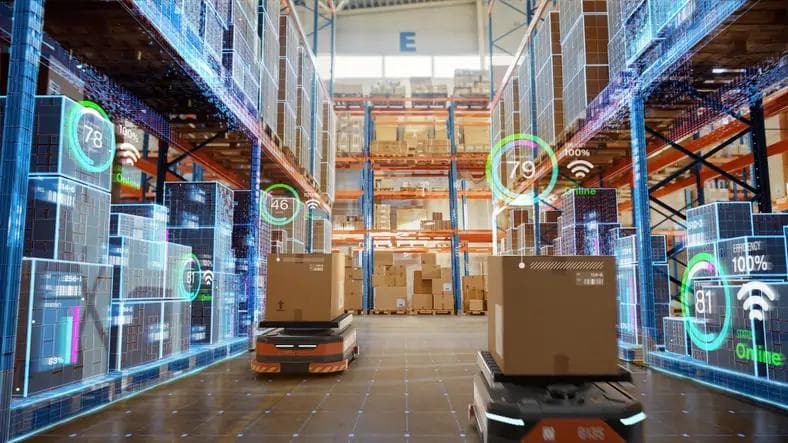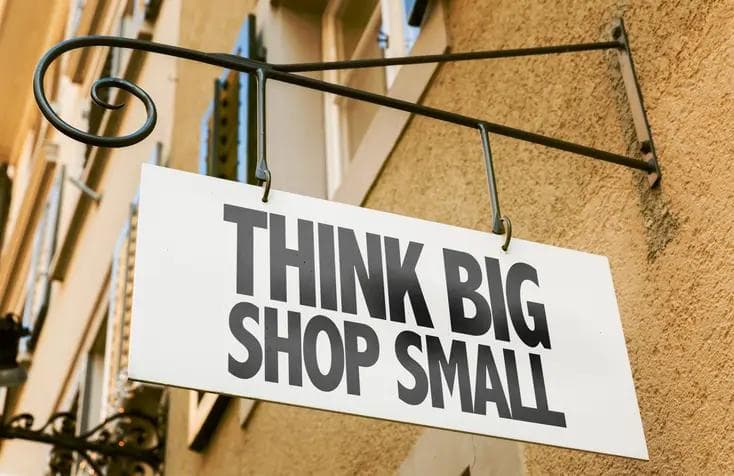Global supply chains: three predictions for the future
Global supply chains: three predictions for the future
Published by maria gbaf
Posted on December 9, 2021

Published by maria gbaf
Posted on December 9, 2021

By Laura Lough, Fulfilment & Logistics Partnership Director at Digital River
It’s been a tumultuous couple of years for global supply chains. First came the pandemic; an unforeseen public health emergency that disrupted the flow of goods and materials, prioritizing essential goods over non-essential goods as well as changing trading patterns. As the virus spread, national lockdowns were implemented, piling added pressure on already creaking commercial networks.
Then, at 23:00 on December 31, 2020, the UK formally left the European Union. It was billed as the rebirth of ‘Global Britain’, but thus far, Brexit has only added to the strain for those in the supply chain game.
Looking ahead, the consequences of both coronavirus and Brexit will continue to be felt for quite some time. As a result, global supply chains will have to adapt at an ever-quicker pace. Here are three predictions as to what that might look like.
1) The fallout from Brexit
Few predicted smooth sailing with Brexit, but the raft of new tariffs, customs duties, rules around employment, and other barriers to trade have come as a shock to even the most seasoned supply chain operators.
Owing to the interconnectedness of global commerce, these pitfalls aren’t hitting only British and European companies — the ripples of Brexit are being felt worldwide. As we move into 2022, those ripples will get stronger.
A key element of this is Brexit’s ending of ‘freedom of movement’ rules, which allowed Europeans to work freely in the UK. For decades, Britain has relied on the ready supply of EU employees, particularly those coming from the continent’s eastern nations.
Now, unable to draw on Europe’s deep reserves of labour, Britain is facing a worker shortage. Things are particularly tough in the haulage trade, where a desperate lack of lorry drivers has led to gaps on supermarket shelves.
This is having wider supply chain ramifications as international manufacturers, particularly those in east Asia, are having to face up to the fact their goods may fail to reach British consumers due to domestic delivery issues.
It’s likely when these Brexit-borne blockages start to ease — it will be because of increased automation.
2) The rise of robotics
AI and machine learning are changing the ways in which global supply chains work. That’s true today, and it’ll be even more true tomorrow.
The coming years will see a proliferation of so-called ‘dark warehouses’: vast storage facilities staffed not by people, but by semi-autonomous robots. Unlike humans, machines don’t require energy intensive lighting to function, so these warehouses could — theoretically — operate unlit all day and all night.
In reality, it’s likely a handful of actual staff will be present to ensure there are no snarl-ups; but by and large, the sorting, picking, and packaging of stock will be done by bots. This can both address the worker shortage and dramatically increase productivity. The combination of humans and automation is the future.
AI will also make its way into the back office. Integrated systems can significantly speed up the behind-the-scenes side of not just global supply chain management, but business management. Increased use of data can better predict where goods need to be an in what volume, eliminating inefficiencies.
3) A hybrid high street
The future won’t wholly be digital, however. In the months ahead, it’s possible that the exponential rise of eCommerce will start to plateau, with the high street making something of a return.
Bricks-and-mortar shops — and their supply chains — are fit for reinvention as we move further into the 2020s. Their focus will shift away from pure sales, looking instead at offering customers in-person shopping experiences unlike what they can get online. With this in mind, we’re likely to see high street stalwarts team up with digital competitors to craft omnichannel retail opportunities that better address how today’s consumers want to shop. They are looking for a seamless experience whether they shop online and pick up in store or browse in a store and make their purchase online for home delivery.
To pull this off, businesses will have to leverage data like never before, providing customers with genuinely unique and personalized experiences. Likewise, merchants will have to start organising their supply chain operations even further ahead, in the region of two years prior to product launches, to ensure operational resilience in an increasingly uncertain world. To this end, partnering with an expert in the field will be fundamental.
With the pandemic and Brexit continuing to cause chaos, it’s easy to be downbeat about the future of global supply chains. But with a little innovation, access to intelligent technologies, and support from the people who know best, preparedness will help ensure the flow of goods need not falter.
By Laura Lough, Fulfilment & Logistics Partnership Director at Digital River
It’s been a tumultuous couple of years for global supply chains. First came the pandemic; an unforeseen public health emergency that disrupted the flow of goods and materials, prioritizing essential goods over non-essential goods as well as changing trading patterns. As the virus spread, national lockdowns were implemented, piling added pressure on already creaking commercial networks.
Then, at 23:00 on December 31, 2020, the UK formally left the European Union. It was billed as the rebirth of ‘Global Britain’, but thus far, Brexit has only added to the strain for those in the supply chain game.
Looking ahead, the consequences of both coronavirus and Brexit will continue to be felt for quite some time. As a result, global supply chains will have to adapt at an ever-quicker pace. Here are three predictions as to what that might look like.
1) The fallout from Brexit
Few predicted smooth sailing with Brexit, but the raft of new tariffs, customs duties, rules around employment, and other barriers to trade have come as a shock to even the most seasoned supply chain operators.
Owing to the interconnectedness of global commerce, these pitfalls aren’t hitting only British and European companies — the ripples of Brexit are being felt worldwide. As we move into 2022, those ripples will get stronger.
A key element of this is Brexit’s ending of ‘freedom of movement’ rules, which allowed Europeans to work freely in the UK. For decades, Britain has relied on the ready supply of EU employees, particularly those coming from the continent’s eastern nations.
Now, unable to draw on Europe’s deep reserves of labour, Britain is facing a worker shortage. Things are particularly tough in the haulage trade, where a desperate lack of lorry drivers has led to gaps on supermarket shelves.
This is having wider supply chain ramifications as international manufacturers, particularly those in east Asia, are having to face up to the fact their goods may fail to reach British consumers due to domestic delivery issues.
It’s likely when these Brexit-borne blockages start to ease — it will be because of increased automation.
2) The rise of robotics
AI and machine learning are changing the ways in which global supply chains work. That’s true today, and it’ll be even more true tomorrow.
The coming years will see a proliferation of so-called ‘dark warehouses’: vast storage facilities staffed not by people, but by semi-autonomous robots. Unlike humans, machines don’t require energy intensive lighting to function, so these warehouses could — theoretically — operate unlit all day and all night.
In reality, it’s likely a handful of actual staff will be present to ensure there are no snarl-ups; but by and large, the sorting, picking, and packaging of stock will be done by bots. This can both address the worker shortage and dramatically increase productivity. The combination of humans and automation is the future.
AI will also make its way into the back office. Integrated systems can significantly speed up the behind-the-scenes side of not just global supply chain management, but business management. Increased use of data can better predict where goods need to be an in what volume, eliminating inefficiencies.
3) A hybrid high street
The future won’t wholly be digital, however. In the months ahead, it’s possible that the exponential rise of eCommerce will start to plateau, with the high street making something of a return.
Bricks-and-mortar shops — and their supply chains — are fit for reinvention as we move further into the 2020s. Their focus will shift away from pure sales, looking instead at offering customers in-person shopping experiences unlike what they can get online. With this in mind, we’re likely to see high street stalwarts team up with digital competitors to craft omnichannel retail opportunities that better address how today’s consumers want to shop. They are looking for a seamless experience whether they shop online and pick up in store or browse in a store and make their purchase online for home delivery.
To pull this off, businesses will have to leverage data like never before, providing customers with genuinely unique and personalized experiences. Likewise, merchants will have to start organising their supply chain operations even further ahead, in the region of two years prior to product launches, to ensure operational resilience in an increasingly uncertain world. To this end, partnering with an expert in the field will be fundamental.
With the pandemic and Brexit continuing to cause chaos, it’s easy to be downbeat about the future of global supply chains. But with a little innovation, access to intelligent technologies, and support from the people who know best, preparedness will help ensure the flow of goods need not falter.
Explore more articles in the Business category











